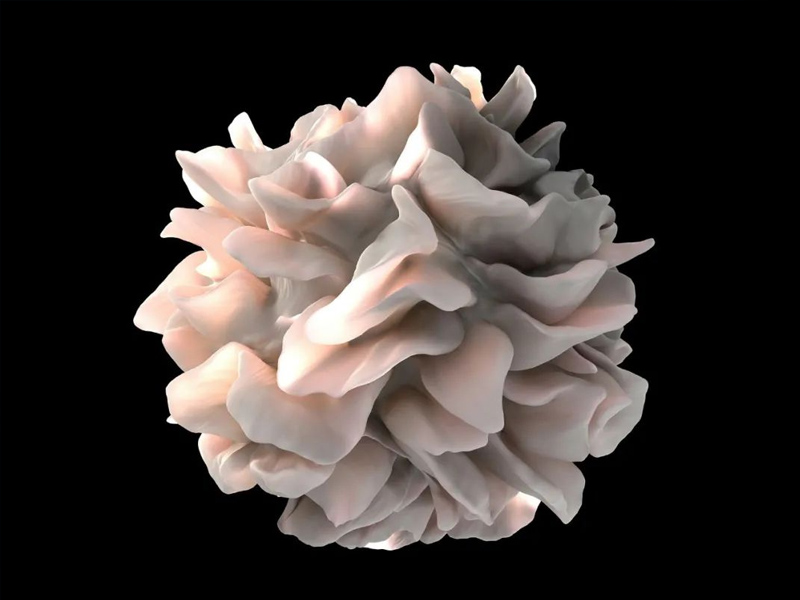Service Hotline:
+86-20 34438810
Studies have shown that innate immune specificity is driven by the nervous system
- Categories:News
- Author:
- Origin:
- Time of issue:2022-02-18
- Views:0
(Summary description)Research led by WSU scientists at Washington State University supports a new theory that people's innate immune system can respond differently to specific pathogens. This quality, called immune specificity, was previously attributed only to the adaptive immune system, which develops through disease over time.
Studies have shown that innate immune specificity is driven by the nervous system
(Summary description)Research led by WSU scientists at Washington State University supports a new theory that people's innate immune system can respond differently to specific pathogens. This quality, called immune specificity, was previously attributed only to the adaptive immune system, which develops through disease over time.
- Categories:News
- Author:
- Origin:
- Time of issue:2022-02-18
- Views:0
Research led by WSU scientists at Washington State University supports a new theory that people's innate immune system can respond differently to specific pathogens. This quality, called immune specificity, was previously attributed only to the adaptive immune system, which develops through disease over time.
This study shows that this innate immune specificity is driven by the nervous system, and neuronal proteins are identified as the key link in this process.
The study, based on animal models, offers the dawn for the treatment of diseases such as sepsis, arthritis and inflammatory bowel disease. In these diseases, the innate immune system attacks the body and leads to uncontrolled inflammation. They can also provide a basis for fine-tuning experimental treatment using the nervous system against infection.
Clinical studies have shown that stimulation of damaged neural circuits, whether electrical or pharmacological, can cure or alleviate many congenital immune diseases. Understanding how the innate immune system responds to specific pathogens allows us to manipulate neural circuits and adjust the intensity of the immune response as needed.
This helps restore the balance of the immune system, or overreaction that may lead to long-term inflammation, tissue damage and even death through callback; Or by enhancing the inadequate response to prevent the deterioration of the infection.
The study was conducted in a tiny worm called C. elegans, which feeds on bacteria in the soil. Caenorhabditis elegans is a common model animal to study the neural regulation of innate immunity. Because its nervous system is simple, it has only 302 identifiable neurons, while there are 86 billion neurons in the human brain, and its transparent body allows scientists to see how different genes are expressed. More importantly, unlike humans, Caenorhabditis elegans lacks adaptive immune system. Therefore, the specificity of its innate immune system can be studied without the interference of adaptive immune response.
The preliminary study by the WSU research team found that the lack of a neuronal receptor protein called nmur-1 has different effects on the survival of Caenorhabditis elegans when exposed to different bacterial pathogens, suggesting that nmur-1 may mediate the specificity of innate immunity in response to speech. Further testing of two bacteria that have opposite effects on survival (bacteria that make life longer and bacteria that make life shorter) confirmed that nmur-1 drives innate immune specificity and revealed how the protein drives different responses to different pathogens.
The researchers found that nmur-1 controls transcription factors, and then controls the transcription of different innate immune genes to deal with different pathogens.
The next step in this study is to determine which neural circuits nmur-1 is part of, and then process these neural circuits to see how it changes the immune response to different pathogens. If successful, this will bring scientists' work closer to the potential application of human therapy.
The findings were published in the journal Cell report.
reference
Wibisono, P., et al. (2022) Neuronal GPCR NMUR-1 regulates distinct immune responses to different pathogens. Cell Reports.
Scan the QR code to read on your phone
Relevant information

+86-20 34438810
(Service Hotline)
Tel: +86-20-34438810
E-mail:sales@magigen.com
Add:Unit 503-504, Building 3 Standard Property Unit 4, No.12 Luoxuan 3th Road, International Bio Island, Guangzhou, China
(Service Hotline)

Copyright © 2022 美格生物 All Rights Reserved.
粤ICP备20006980号 技术支持:中企动力 广州






